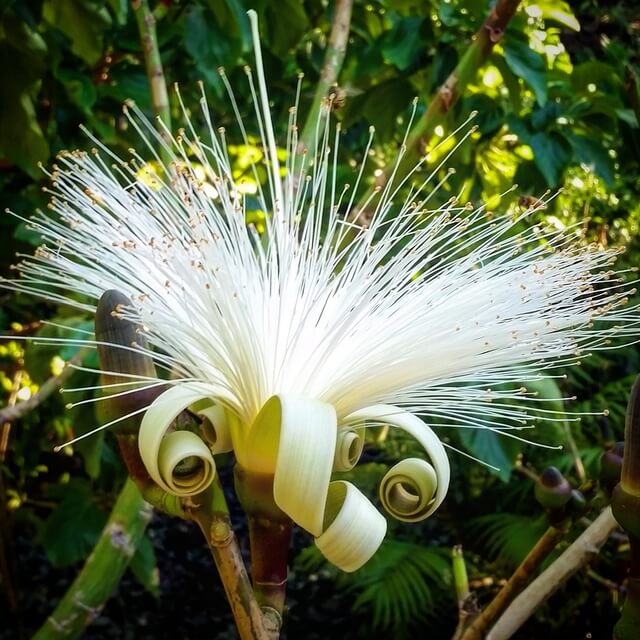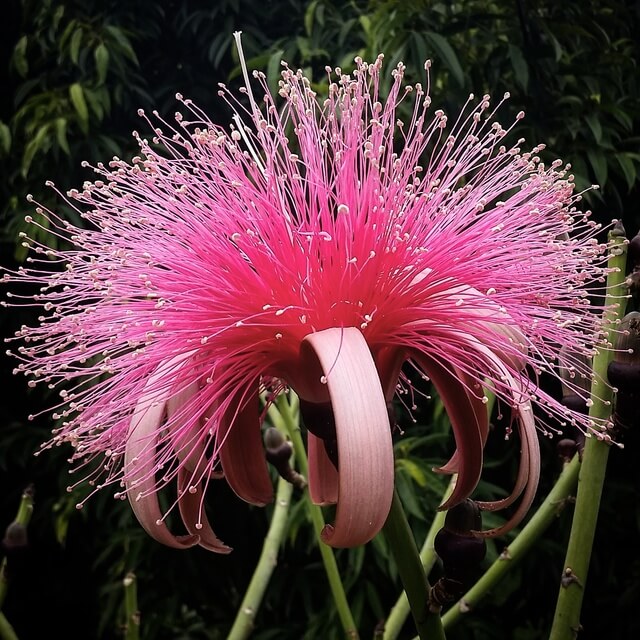Adam Scott's vintage Kamehameha shirt on the cover of CNET Magazine
Earlier this month I found myself with a few hours to kill during a layover in Atlanta. As I wandered around the terminal, peeking into the shops, the cover of the latest CNET Magazine caught my eye. The vivid cerise cover features actor Adam Scott (of Parks and Recreation, Big Little Lies, and The Good Place fame, to name a few) wearing an exquisite 1950s vintage aloha shirt by Kamehameha.

If you enjoy Scott and his characters as much as I do, you’ll want to check out the magazine’s profile. But, naturally, I was also fascinated with the aloha shirt.
The button-up is a dark midnight blue with a pale beige, pink, and cyan floral pattern. The words “Aloha,” “Bombax,” and “Blossom”, written in script, are interspersed between the floral images. The vintage-style collar is wide with an acute point, and the breast pocket is non-matched.
The flower depicted is a pseudobombax ellipticum, or “shaving brush tree,” native to South America but commonly cultivated as an ornamental plant in Hawaii. The blossoms, which appear in Spring and last for only a day, resemble an exploding firework - curled-back sepals and a bushel of long, thin, stamens. There are both white and pink varieties. The name pseudobombax, meaning “false cotton”, comes from the soft fibers surrounding the plant’s seeds, which were once used as insulation and fill for pillows.


The shirt itself is a 1950s design, manufactured by Kamehameha Garment Company. Kamehameha, named for King Kamehameha I, was established in 1936 and went on to become one of the most successful aloha shirt manufacturers of the middle 20th century. Vintage Kamehameha shirts are now prized collector’s items. The company still operates today, periodically releasing reprints of their classic designs.


The bombax print pattern was the work of celebrated designer Vera Stone Cook. Cook, a graduate of the University of Minnesota and the Chicago Art Institute, built a stable career spanning various types of design, from rugs to dinnerware to technical illustration. In 1948 she visited the Hawaiian islands, intending to stay for a three-week vacation. She never left. After relocating to the islands, she went on to become a freelance designer, selling aloha shirt prints to multiple manufacturers.
